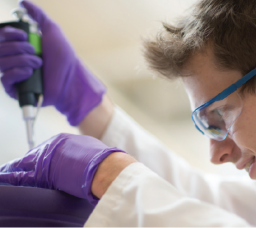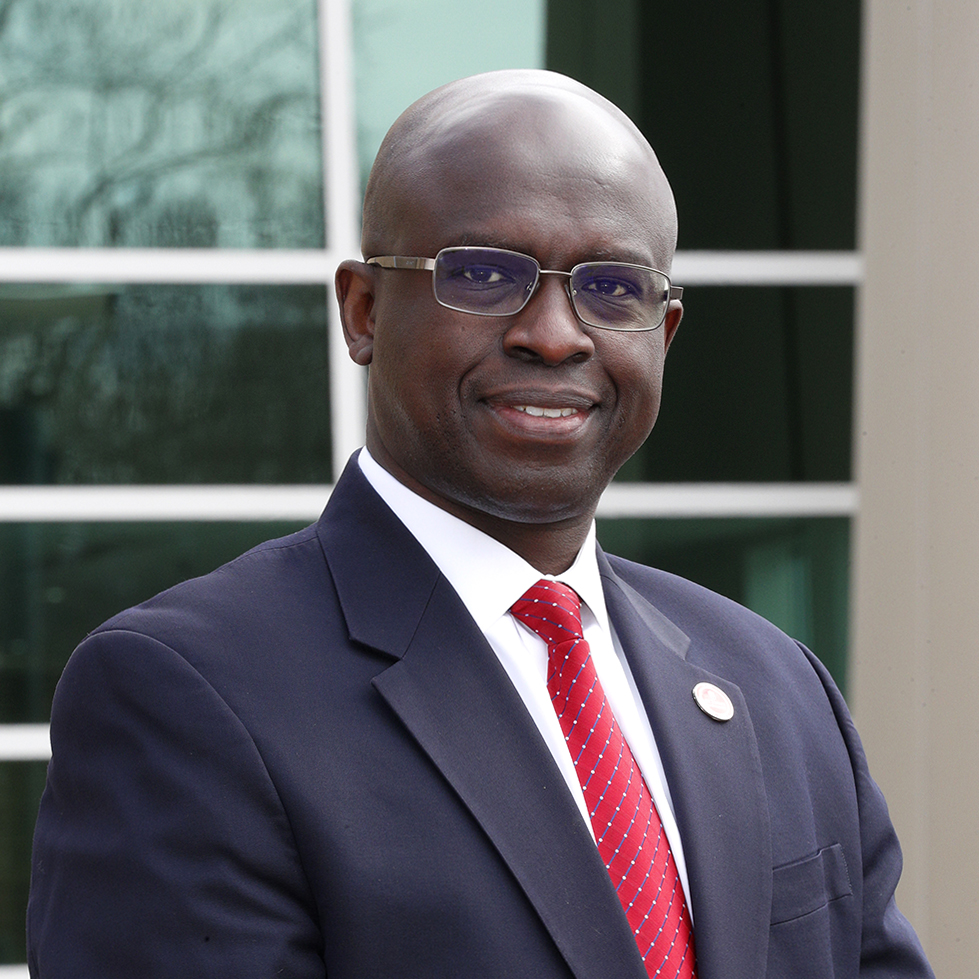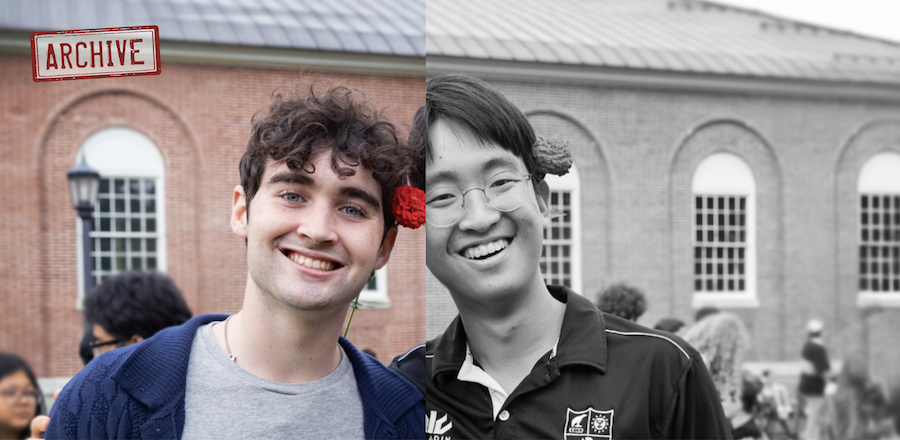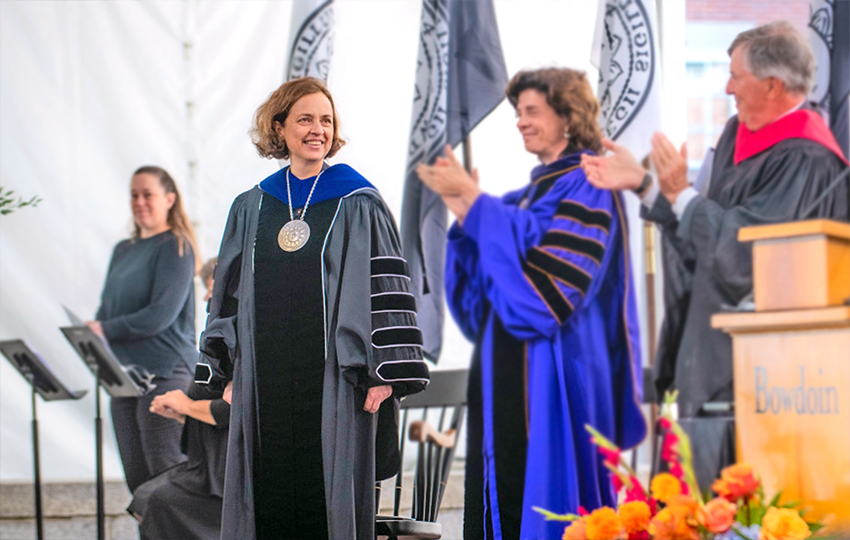Brain Waves, Phobias, and Bacterial Sugars: Bowdoin Research in Human Health
By Raleigh McElvery '16
Demystifying Memory
On the 2nd floor of Kanbar Hall, Assistant Professor of Neuroscience and Psychology Erika Nyhus's office is adorned with research posters displaying diagrams of the brain, and white boards featuring undulating scribbles labeled EEG.
Nyhus is fascinated by memories — our ability, or inability, to recall various types of information. As such, she focuses on the interaction between two brain areas, the frontal cortex and hippocampus. “This network is implicated in many different memory disorders,” she said. “The connection between these regions is one of the first things to go if you develop Alzheimer’s disease.”
As Alzheimer’s progresses, cognitive abilities deteriorate due to the accumulation of protein clumps known as “plaques” and “tangles.” Research has shown these protein snarls form along neural pathways running between the frontal cortex and hippocampus. Here’s where Nyhus's research enters the scene. “Those pathways are important for difficult memory tasks,” she said. “We hope our study of normal brain function will help us understand what goes wrong in those disorders.”
Nyhus and her team of Bowdoin students glimpse the inner workings of the brain via electroencephalography, or EEG. It looks a bit like the classic mad scientist tableau: participants don swim caps complete with wiry protrusions, and Nyhus monitors electrical signals emitted by neurons as the participants perform certain activities. Nyhus can discern when different brain regions “synchronize” with each other, indicating communication between areas.
Her current project concerns the relationship between memory and attention. “How you focus your attention while learning information can affect how likely you are to remember that information later on,” Nyhus said. “Essentially, you remember information better in the same context you’ve encoded it.” The hippocampus, in particular, stores items based on context. For example, exposing participants to a scent that was present when they first acquired information may trigger recollection later on.
Nyhus maintains that memory research is of critical importance, and not just in terms of Alzheimer’s treatment (although that is one very crucial application). “Memory is involved in everything,” she said. “I’m interested in lots of types of cognition, but it all seems to come back to memory.”

Alleviating Anxiety
Though Assistant Professor of Psychology Hannah Reese doesn’t study brains in quite the same way, she too is immersed in research of mental health.
“Essentially, I study the nature and treatment of anxiety and obsessive-compulsive spectrum disorders,” Reese said. Anxiety can manifest as social fears or general worry, sometimes accompanied by the intense physical sensations of a panic attack, she said. Symptoms relating to the obsessive-compulsive spectrum involve frequent distressing thoughts that lead to attempts to mitigate those feelings through repetitive behaviors — including hand washing, counting to certain numbers, or praying, among other things.
“I’m trying to understand the underpinnings of these disorders to improve current treatments,” Reese said. This means assessing disruptions in cognitive processes such as memory, attention, and perception. “With specific phobias, like fear of spiders, people tend to pay attention to things that are reminiscent of spiders and make them anxious,” Reese said. “I’m trying to alter that attentional bias, to see if I can change their symptoms and fears. The field is shifting to ask what processes cause the disorders, and how can we correct those processes.”
As the College’s newest addition to the Psychology Department, Reese will be translating the work she began during her time as a researcher and clinician at Massachusetts General Hospital to Bowdoin’s laboratory setting, with the collaboration of student researchers.
Reese is also passionate about improving access to effective psychological treatments. To this end, she aims to explore patients’ rationale for seeking certain types of treatment, and to expand the means by which they receive it. She explained that currently there is a deficit of mental health providers, to say nothing of the lack of professionals trained in the most effective therapies. “We need to reach out to clinicians and the general public alike to educate them,” Reese said.

Targeting Pathogens
While Reese and Nyhus tackle challenges of the mind, Associate Professor of Chemistry and Biochemistry Danielle Dube works to build our defenses against detrimental microorganisms.
“Just like M&M’s, all cells are sugar-coated,” Dube said. Her research focuses on select sugars that reside on the surface of pathogenic bacteria — but are curiously absent from human cells. Dube and a group of Bowdoin students are working on contrasting these two sugar types, taking advantage of the differences to design antibiotics directed against the pernicious cells, while leaving the helpful cells unscathed. “We make new types of antibiotics and seek to identify new antibiotic targets,” she said.
Dube explained two of the problems with current treatments. One, as bacteria develop resistance to commonly used antibiotics, our human-made remedies become less effective. Two, existing therapeutics lack specificity. “Antibiotics are like carpet bombs; they kill all the bacteria in you,” said Dube. “The problem is that most of the bacteria in us are beneficial — they’re really important for maintaining human health.” Her research addresses this “carpet bombing” effect and subsequent antibiotic resistance.
Dube and her team design novel antibiotics, against which pathogenic bacteria have yet to develop resistance. Furthermore, they target these antibiotics to fight specific bacteria. “If we find a distinctive sugar on the surface of a pathogenic bacteria that is not on the surface of beneficial bacteria, we can very selectively go after that bacteria and that bacteria only,” she said. This tactic eliminates widespread repercussions that might hinder or destroy “good” bacteria.
The team performs synthetic chemistry to assemble the innovative antibiotics, and then conducts metabolic feeding experiments. This involves feeding specific sugars to pathogenic bacteria, which incorporate those sugars onto their surfaces. Next, the researchers expose the bacteria to their self-devised therapeutics, watching for signs of “selective targeting” and destruction.
“Currently everything is done in a test tube,” Dube said. “What I would like to do is have a more realistic model system.” She envisions integrating mice into the lab — studying bacterial infections in rodents and designing antibiotics with affinities for certain bacterial sugars. Above all, she hopes to augment the field of medicine. “I’ve always loved the intersection between chemistry and biology,” she said. “This allows me to think about how we can use what we know as chemists to improve human health,” she said.



